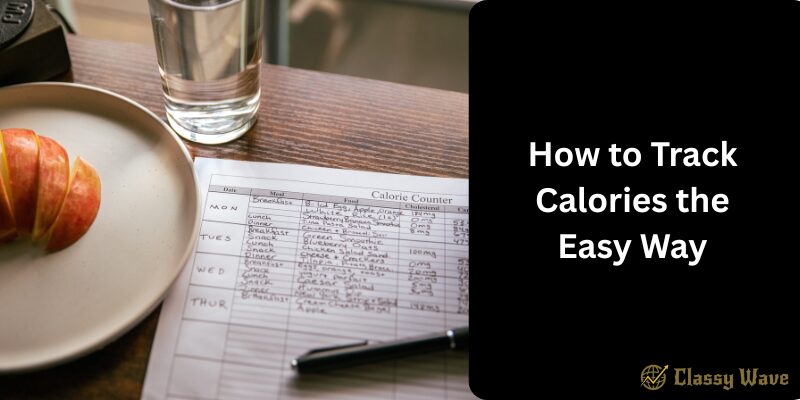How to Track Calories the Easy Way | Classy Wave
If you’re trying to lose weight, gain muscle, or simply eat healthier, tracking your calories can make a huge difference. The good news? It doesn’t have to be complicated or time-consuming. With the right tools, mindset, and a few simple habits, you can easily keep track of your calorie intake without feeling overwhelmed.
Why Tracking Calories Matters
Think of calorie tracking like budgeting your money. You can’t spend what you don’t know you have — and the same goes for eating. Tracking helps you understand how much energy (calories) you consume versus how much you burn. This awareness helps you make smarter food choices, manage your weight, and build a better relationship with food.
Step 1: Know Your Daily Calorie Needs
Before you start tracking, you need to know how many calories your body needs per day. You can calculate this using a calorie calculator or apps like MyFitnessPal or Lose It!
These tools consider your:
- Age
- Gender
- Weight
- Height
- Activity level
Once you know your maintenance calories, you can decide whether to eat less (for weight loss) or more (for muscle gain).
Step 2: Use a Calorie Tracking App
One of the easiest ways to track calories is by using an app. The best part? They do all the math for you. Some popular options include:
- MyFitnessPal
- Lose It!
- Cronometer
- Yazio
These apps let you scan barcodes, save meals, and track macros (protein, carbs, fat) with just a few taps. You can even log homemade recipes and set personalized goals.
Step 3: Weigh and Measure Your Food (At Least at First)
While it might sound like extra work, weighing your food for the first few weeks helps you understand portion sizes. Use a digital kitchen scale or measuring cups to get accurate data.
After some time, you’ll naturally start estimating portion sizes without needing to measure everything — making calorie tracking effortless.
Step 4: Keep It Simple
You don’t have to track every single crumb. Focus on your main meals and snacks. If you miss a small bite or two, don’t stress about it. The goal is consistency, not perfection.
Here’s a quick tip:
- If you eat similar foods daily, save them as “favorites” in your app.
- Create meal templates for faster logging.
Step 5: Understand Food Labels
Food packaging contains all the information you need to track calories accurately. Pay attention to:
- Serving size
- Calories per serving
- Macronutrient breakdown
Sometimes, a single package contains multiple servings — so double-check to avoid underestimating your intake.
Step 6: Focus on Quality, Not Just Quantity
Not all calories are equal. 100 calories from almonds nourish your body more than 100 calories from soda. While tracking calories helps control portions, try to choose nutrient-dense foods like:
- Whole grains
- Lean proteins
- Fresh fruits and vegetables
- Healthy fats (nuts, olive oil, avocado)
This approach helps you stay fuller longer and maintain better overall health.
Step 7: Don’t Obsess — Be Flexible
Calorie tracking should make your life easier, not stressful. It’s okay to enjoy a treat now and then. Think of it as an average — one high-calorie day won’t ruin your progress if you stay consistent over time.
Listen to your body’s hunger cues and use tracking as a guide, not a strict rulebook.
Step 8: Use Smart Gadgets and Wearables
Technology makes tracking even easier. Devices like Apple Watch, Fitbit, or Garmin sync with calorie apps to estimate how many calories you burn throughout the day. This helps you adjust your intake for your activity level automatically.
Step 9: Plan Your Meals Ahead
Meal planning is a calorie-tracking shortcut. When you plan your meals in advance, you already know what and how much you’re going to eat — no guesswork required. Try prepping your meals on weekends and storing them in labeled containers with calorie counts.
Step 10: Track Progress, Not Just Numbers
The ultimate goal of calorie tracking is to understand your habits and make small, sustainable changes. Monitor how you feel, how your clothes fit, and your energy levels — not just the scale.
Your success isn’t only about numbers; it’s about creating a balanced lifestyle.
Conclusion
Tracking calories doesn’t have to be a burden. With a few simple tools and habits, you can make it part of your daily routine effortlessly. Start small, be consistent, and focus on progress — not perfection. In no time, you’ll develop a natural understanding of what your body needs and how to fuel it right.







